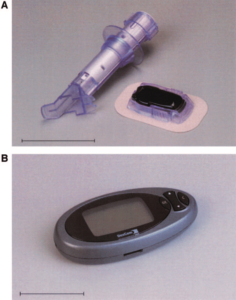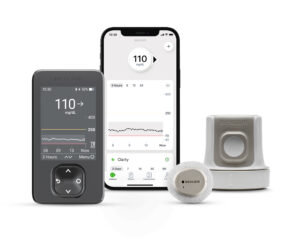This week I attended a JDRF in-person meet-up in Kansas City. It was my first since Covid, and it was good to see over 30 type 1s in a room talking about diabetes.
The meeting was about the new Dexcom G7 continuous glucose monitor and was presented by two local Dexcom representatives.
After the presentation, there was a Q&A session, and the JDRF moderator started by asking the Dexcom reps some of the questions submitted before the meeting. One of them was about Dexcom’s spend on advertising:
“Why does Dexcom pay Nick Jonas to be a spokesman? Why did Dexcom spend money on a Super Bowl ad when those dollars could be spent helping people that can’t afford their medical devices?
There wasn’t a crisp answer from the Dexcom folks, but the group conversation was revealing. Most felt that the paid representation with Nick Jonas was worth it as he is an example of what people can accomplish living with type 1. Many commented that they didn’t have type 1 role models growing up, and it’s nice that Dexcom spends money to showcase him (using their product, of course).
What wasn’t mentioned is that a company’s advertising spend is part of a marketing plan that increases awareness and demand. As demand grows, price decreases, creating improved economics for the consumer and company. If done correctly, it’s a win-win.
There is untapped demand for CGM products in the type 2 market and others that want improved health (*). Companies like Abbott, Eversense, and Dexcom realize that awareness is critical. They also understand that patients and medical professionals make decisions, hence the public promotion of their products. Decisions for many medical devices are made mostly by medical professionals. (When did you last see a public advertisement for a coronary stent or prosthetic hip replacement?)
With so much potential in the CGM market, marketing dollars should also result in higher profits that can be reinvested in future products. Hey, look at the G7 … it’s a far cry from that first-generation Dexcom STS in 2006.
(*) The Dexcom reps mentioned that Dexcom changed its mission from “Empowering people to take control of diabetes” to “Empowering people to take control of health.”
+ I am fascinated by today’s tech advances in today’s world of type 1 diabetes. I remember a time in the 1990s when I asked my endocrinologist why blood sugar data wasn’t connected to insulin pumps. He said the roadblock was getting a sensor that was reliable and accurate. A decade later, the first Continuous Glucose Monitors became available.
++ Ouch! That first-generation Dexcom STS inserter was painful … we’ve come a long way, baby!





